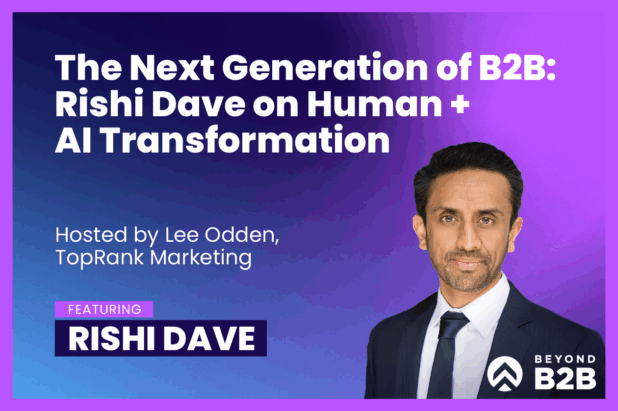
Speaking at both a B2B Marketing and a Public Relations conference in the space of a week has yielded some insightful discussions. Many of those conversations have focused on the transition from where the B2B companies are today – a mix of tactics directed squarely at the C-level customer – and where a content marketing strategy might take them.
With my involvement in the B2B marketing space, I get to talk to a lot of marketing and PR professionals about marketing and communications programs. The desire to “do more” and innovate marketing isn’t unique – it’s pretty common across the board, especially with 2015 planning under way.
In the B2B technology world, traditional digital marketing tends to focus directly on the customer as defined by sales. Investments are made in advertising and editorial in the appropriate publications, speaking and sponsoring at the right events and creating a mix of owned media such as white papers, case studies and reports in the hopes that a C-level executive will find, read and be inspired by them.
That’s a tough hill to climb.
Creating a mix of content assets that describe a tech company’s products and services is not content marketing in the way that we practice it today.
Content Marketing is Strategic
Content Marketing is an approach and commitment by a brand to understand the specific needs of a target audience segment and to plan, create and promote content that addresses those needs. Content Marketing programs reaches, engages and inspires buyers as well as those that influencer buyers. The editorial plans that drive a strategic approach to content marketing include specific goals right along with the ability to adjust and optimize program performance.
What many B2B companies are doing with their marketing and content is to execute tactics – create a blog, videos, microsite, articles, and other content without necessarily connecting those tactics to an overarching business goal (outside of hoping for leads).
Content, media and advertising directed only at the C-level buyer misses two important points:
- Every other B2B technology company is doing the same things, going after the same C-level executives, creating information numbness
- Actual users of the technology are more influential on C-level decisions to buy than most B2B vendors think
There are so many B2B technology companies with terrific products and services following “the way we’ve always done it” marketing, it represents an huge opportunity for education and change. Differentiation of message and means to connect with B2B tech buyers isn’t just aspirational, it’s a necessity. Identifying, qualifying and engaging internal and external influencers is also essential.
When is it the right time for a B2B technology company to commit to a content marketing strategy?
Right now of course.
Guided by a strategy that answers why, for who and to what end, tech companies can plan and implement content programs accountable to how buyers discover, consume and act on information that will lead to engagement and sales – even advocacy.
For example, a white paper authored with an industry analyst for the B2B company can be joined by an eBook c0-created with customers and influencers that serves as a resource for the industry. Not only are thought leadership objectives served with such an eBook, but so are customer acquisition and advocacy as the eBook is customized for specific customer segments and repurposed across channels from social networks to email to paid search ads.
I’m a firm believe in content marketing as a “right now” strategy, but I’m even more bullish on the notion of co-creation and what I like to call “Participation Marketing”. With co-created content marketing, not only do you create a higher quality content asset that participants are inspired to help promote, but you create an experience for the customers, influencers and prospects involved with it.
This is exactly what we do with conference eBooks. Over the past 3 years, we’ve not only connected with over 100 Fortune 1000 marketing executive decision makers, but we’ve created memorable experiences by co-creating content that helps advance our mutual goals. This type of approach is entirely transferrable to B2B companies that engage in industry events.
Informing buyers and constituents about your technology solutions isn’t enough to be competitive in the B2B space. Humanization of B2B content is essential to differentiate and create more relevant and meaningful experiences.
What I love about working with tech companies in the B2B space is that they often have great products, an impressive roster of customers and important insights about those customers. More often than not, they also need someone with a strategic perspective that can pull all those important ingredients together to create content marketing strategy.
Creating such a strategy and introducing creative ideas from other industries and engagements is exactly what I find so compelling. As B2B companies undergo their planning for 2015, I hope posts like this one provide some perspective on the role that a content marketing strategy can play in the marketing mix for next year and beyond.
Photo: Shutterstock


